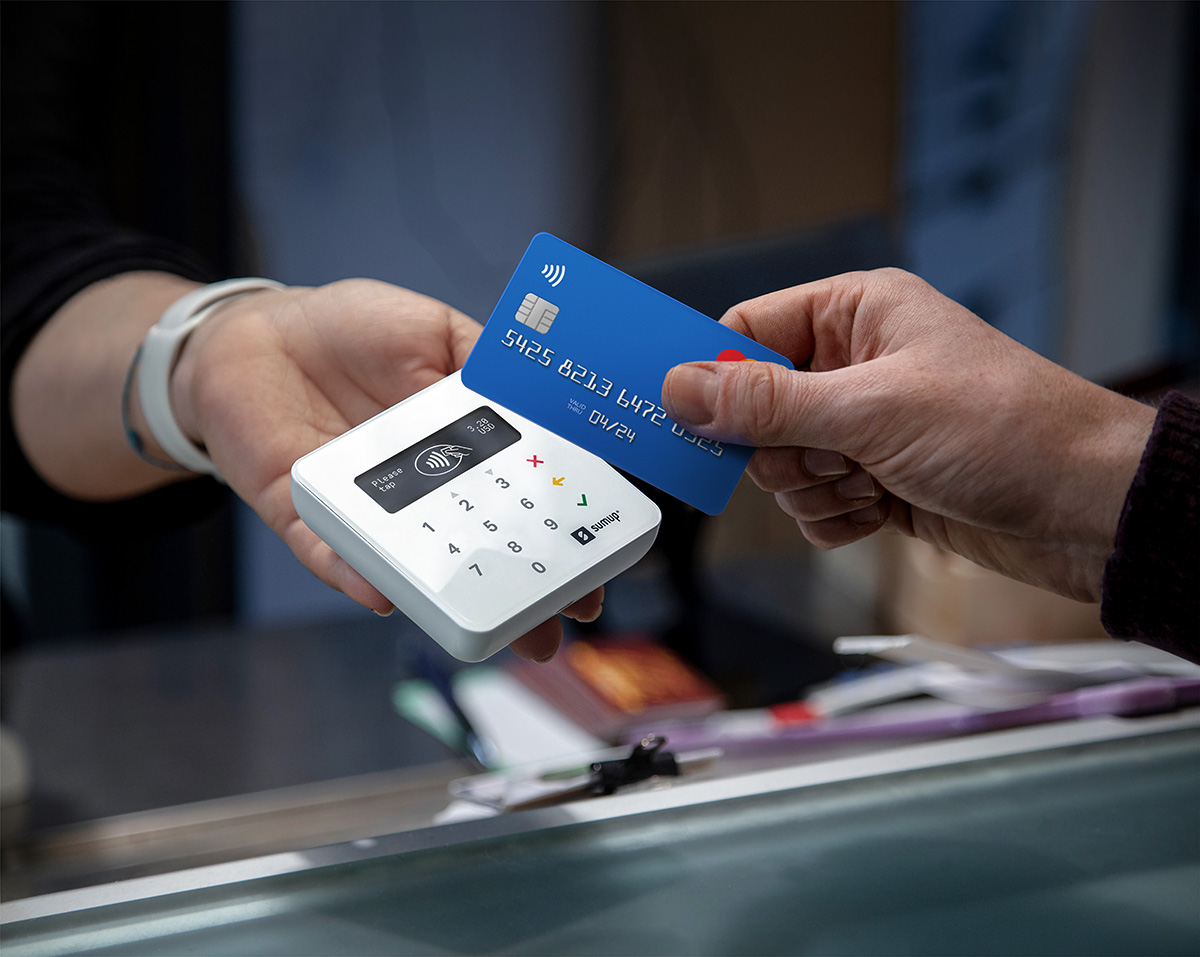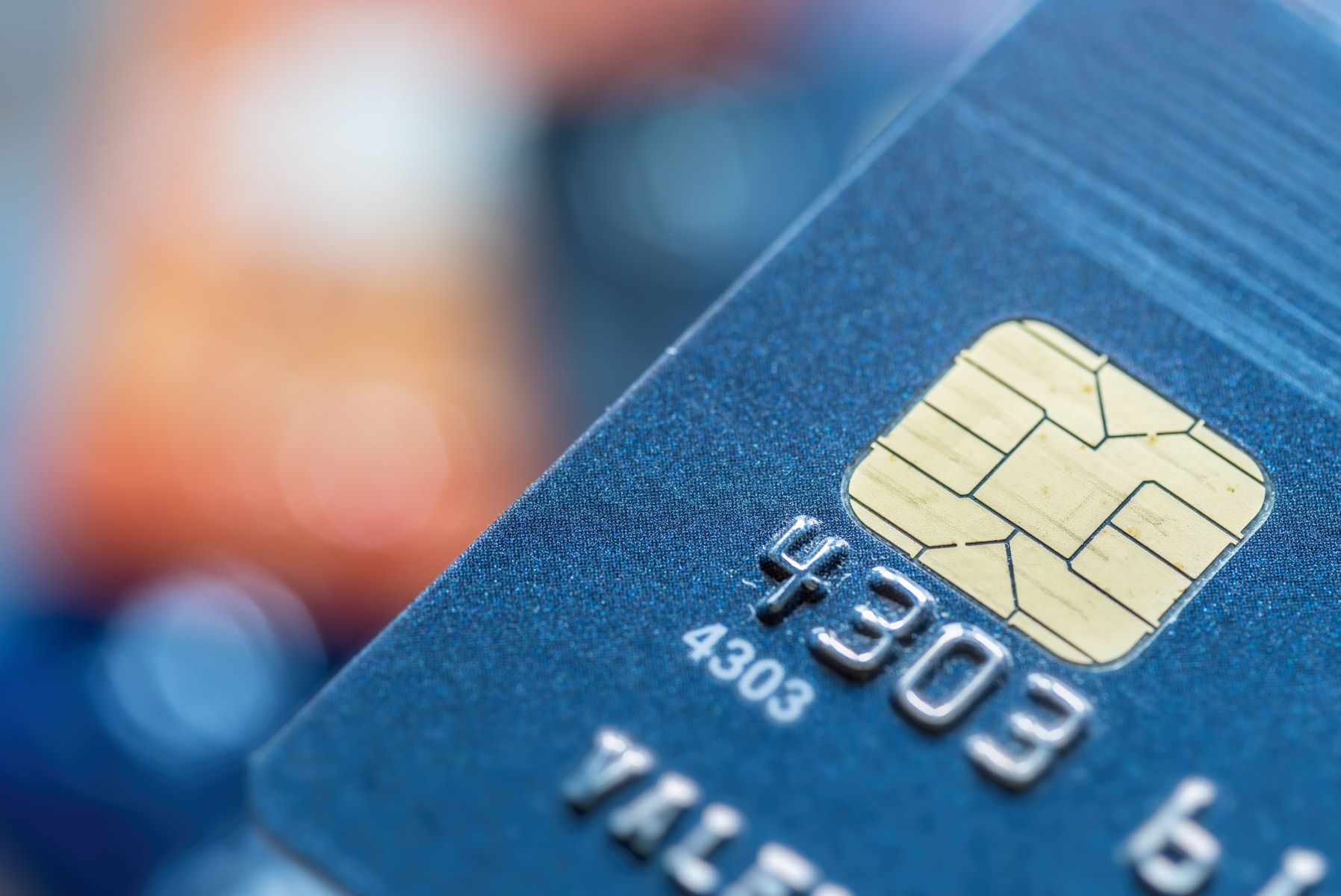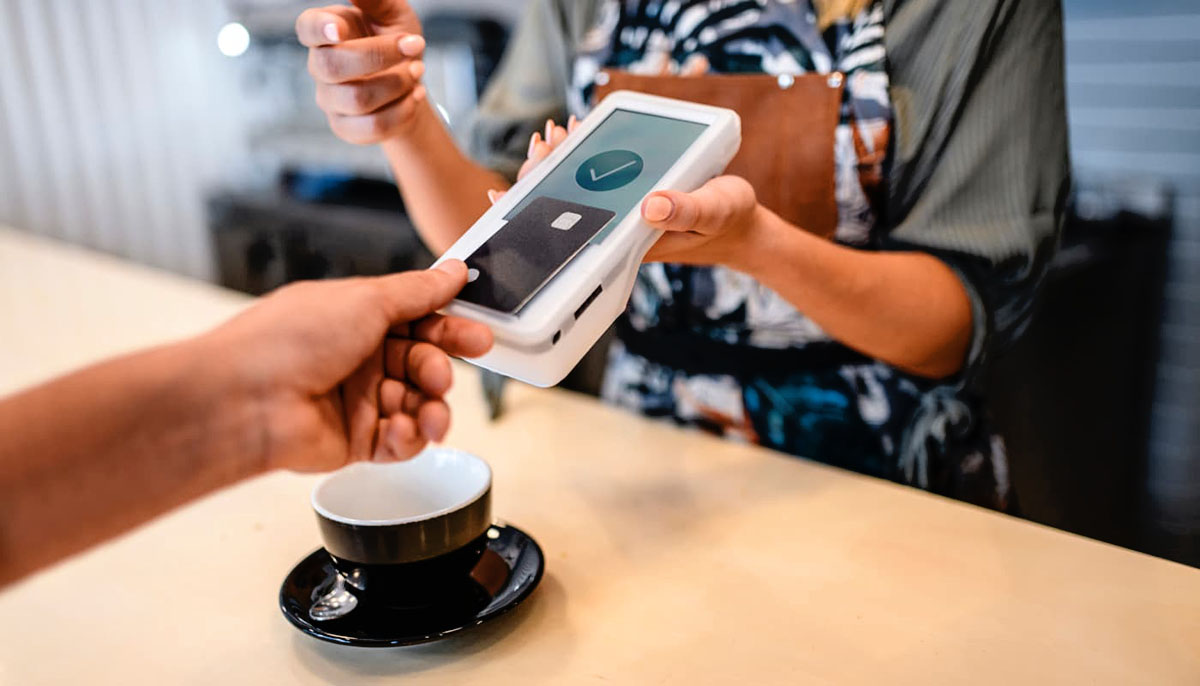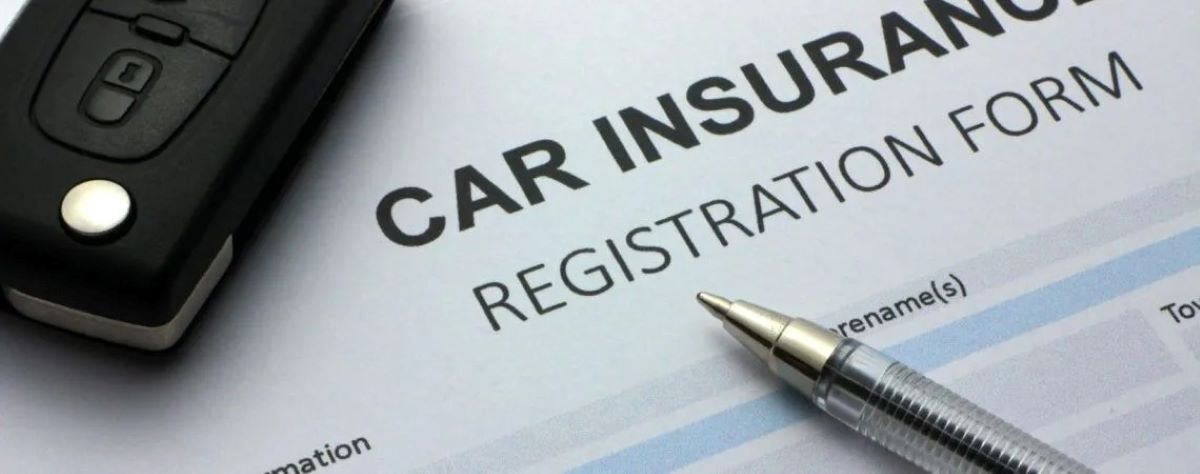

Finance
Credit Card Chip: How It Works
Modified: December 30, 2023
Learn how the credit card chip works in this comprehensive guide. Discover the latest advances in finance technology that keep your transactions secure and convenient.
(Many of the links in this article redirect to a specific reviewed product. Your purchase of these products through affiliate links helps to generate commission for LiveWell, at no extra cost. Learn more)
Table of Contents
- Introduction
- What is a Credit Card Chip?
- Types of Credit Card Chips
- How Does a Credit Card Chip Work?
- Chip and PIN Technology
- Chip and Signature Technology
- Benefits of Credit Card Chips
- Drawbacks of Credit Card Chips
- How to Use a Credit Card Chip
- Understanding Chip Card Transactions
- Chip Card Security Features
- Frequently Asked Questions (FAQs)
- Conclusion
Introduction
Welcome to the world of credit cards, where convenience meets security. Over the years, credit cards have revolutionized the way we make purchases and manage our finances. As technology continues to advance, credit card companies have sought innovative methods to enhance the security and protection of their customers’ sensitive information. One such technological advancement is the credit card chip, also known as EMV (Europay, Mastercard, and Visa) technology.
The credit card chip is a small, metallic square that is embedded into credit and debit cards. It replaces the traditional magnetic stripe found on the back of the card. The chip contains encrypted data that is used to authenticate and authorize transactions, providing an added layer of security when making purchases.
In this article, we will delve into the world of credit card chips, exploring how they work, the different types available, and the benefits and drawbacks associated with this technology. We will also provide a guide on how to use a credit card chip and shed light on the security features that make these chips so effective in preventing fraud.
So, whether you’re a seasoned credit card user or someone who’s curious about the inner workings of this technology, join us as we unravel the mystery behind the credit card chip and discover how it has shaped the modern landscape of financial transactions.
What is a Credit Card Chip?
A credit card chip, also known as an EMV chip, is a small microchip embedded into credit and debit cards to enhance the security of transactions. This chip is a vital component in the global shift away from magnetic stripe cards, which have proven to be susceptible to fraudulent activities.
The credit card chip is typically made of metal and is capable of storing and exchanging data securely. It is integrated into the card, either on the front or on the back, and can be easily identified by its metallic appearance.
The main purpose of the credit card chip is to generate a unique code for every transaction, making it extremely difficult for fraudsters to replicate or tamper with the information. Unlike magnetic stripe cards, which store static information that can be easily skimmed or copied, the chip encrypts the transaction data, providing an added layer of protection.
When a chip-enabled credit card is used for a transaction, the chip and the merchant’s chip-enabled payment terminal communicate with each other to authenticate and authorize the transaction. This process ensures that the card being used is legitimate and that the transaction is authorized by the cardholder.
Overall, credit card chips are a significant advancement in payment card technology, designed to combat the rising threat of credit card fraud. By integrating sophisticated encryption and authentication measures, these chips have become a global standard for secure transactions.
Types of Credit Card Chips
Credit card chips come in different types, each with its own specific features and capabilities. Let’s take a closer look at the two main types of credit card chips:
- Chip and PIN Technology: This type of credit card chip requires the cardholder to enter a personal identification number (PIN) to complete the transaction. The chip generates a unique code for every transaction, and the PIN serves as an additional layer of verification. This type of chip is commonly used in Europe and other regions, and it provides a high level of security as the PIN acts as an added authentication factor.
- Chip and Signature Technology: In this type of credit card chip, the cardholder is required to sign a receipt to verify the transaction. The chip generates a unique code for each transaction, ensuring its authenticity. While it offers increased security compared to magnetic stripe cards, this type of chip is considered less secure than Chip and PIN technology, as a signature can potentially be forged.
In recent years, there has been a growing shift towards implementing Chip and PIN technology in various countries. The use of a PIN adds an extra layer of security, minimizing the risk of unauthorized transactions even if the physical card is lost or stolen.
It’s important to note that the specific type of credit card chip may vary depending on the issuing bank and the region in which the card is used. Some credit cards may even offer a combination of both Chip and PIN and Chip and Signature capabilities, providing flexibility to consumers.
Regardless of the type of credit card chip, the ultimate goal remains consistent: to provide a more secure and reliable method of conducting transactions, protecting both consumers and merchants from fraudulent activities.
How Does a Credit Card Chip Work?
At first glance, the credit card chip may appear to be a simple piece of metal, but its inner workings are more complex than meets the eye. Let’s dive into how a credit card chip works:
When a chip-enabled credit card is inserted into a chip-enabled payment terminal, a process known as “chip and dip,” several key steps occur:
- Powering Up: As the card is inserted into the terminal, the chip is powered up. It receives power from the terminal itself, eliminating the need for a separate battery.
- Data Transmission: The chip and the payment terminal begin a secure data transmission process. The chip sends encrypted information to the terminal, including the card’s unique identifier and transaction data.
- Authentication: The terminal sends the information received from the chip to the card’s issuing bank for authentication. The bank verifies the card’s validity, checks for any suspicious activity, and ensures that the transaction can proceed.
- Generating a Unique Code: Once the card’s authenticity is confirmed, the chip generates a unique code known as a cryptogram. This cryptogram is specific to the transaction and cannot be used for any other purpose.
- Transaction Authorization: The chip sends the generated cryptogram back to the payment terminal. The terminal verifies the cryptogram to ensure its authenticity, and if everything checks out, the transaction is authorized.
This entire process happens within a matter of seconds, providing a seamless experience for both the cardholder and the merchant.
It’s important to note that credit card chips are designed to enhance security and protect against fraud. The encrypted data stored within the chip makes it extremely difficult for fraudsters to intercept or manipulate transaction information. Additionally, the use of a unique cryptogram for each transaction adds an extra layer of security, making it nearly impossible for hackers to replicate or reuse the code for fraudulent purposes.
Overall, credit card chips have revolutionized the way we conduct transactions, making them safer, more secure, and more convenient for consumers and merchants alike.
Chip and PIN Technology
Chip and PIN technology is a type of credit card chip that requires the cardholder to enter a personal identification number (PIN) to complete a transaction. This technology has become widely adopted around the world as a more secure method of payment.
With Chip and PIN technology, the process of completing a transaction involves the following steps:
- Card Insertion: The cardholder inserts their credit card into a chip-enabled payment terminal.
- Card Authentication: The chip in the card communicates with the payment terminal, authenticating the card and verifying its validity.
- PIN Entry: The cardholder is prompted to enter their unique PIN on the payment terminal’s keypad. The PIN serves as an additional security measure to verify the cardholder’s identity.
- Generating a Unique Code: The chip generates a unique code, known as a cryptogram, for the transaction based on the cardholder’s PIN and other transaction data. This cryptogram is specific to the transaction and cannot be used for any other purpose.
- Transaction Authorization: The generated cryptogram is sent back to the payment terminal, where it is verified for authenticity. If the cryptogram is validated, the transaction is authorized.
One of the key advantages of Chip and PIN technology is the increased security it offers. The use of a PIN adds an additional layer of protection, ensuring that even if the physical card is lost or stolen, it cannot be used without the correct PIN. This greatly reduces the risk of unauthorized transactions and minimizes the impact of card theft.
Chip and PIN technology has gained significant popularity in Europe and other regions, where it is considered the standard for card-based transactions. It has played a significant role in reducing counterfeit card fraud, as the chip’s ability to generate unique cryptograms makes it virtually impossible for fraudsters to replicate the transaction data.
It’s important for cardholders to keep their PINs secure and avoid using easily guessable numbers to maximize the effectiveness of Chip and PIN technology. Additionally, merchants need to ensure they have chip-enabled payment terminals to accommodate this type of card technology.
Overall, Chip and PIN technology has transformed the landscape of credit card payments, providing enhanced security and peace of mind for both cardholders and merchants.
Chip and Signature Technology
Chip and Signature technology is a type of credit card chip that requires the cardholder to provide a signature as a form of verification during a transaction. While not as secure as Chip and PIN technology, it still offers improved security compared to traditional magnetic stripe cards.
Here is a breakdown of the process involved in completing a transaction using Chip and Signature technology:
- Card Insertion: The cardholder inserts their credit card into a chip-enabled payment terminal.
- Card Authentication: The chip in the card communicates with the payment terminal, authenticating the card and verifying its validity.
- Transaction Amount Entry: The cardholder provides the payment terminal with the transaction amount through various means, such as manually entering it or the payment terminal retrieving it from the merchant’s system.
- Signature Verification: The payment terminal prompts the cardholder to sign a receipt or a touchscreen display with their signature. The signature is then compared to the signature on file, allowing for verification.
- Transaction Confirmation: Once the signature is verified, the payment terminal generates a unique code, called a cryptogram, specific to the transaction. This cryptogram is embedded within the transaction data and is sent to the issuer for further verification.
- Transaction Authorization: The issuer receives the cryptogram and verifies its authenticity. If the cryptogram is valid, the transaction is authorized, and the payment is processed.
While Chip and Signature technology provides increased security compared to magnetic stripe cards, it is considered less secure than Chip and PIN technology. A signature can potentially be forged or copied, making it less reliable as a form of verification. However, Chip and Signature technology still offers significant advantages over magnetic stripe cards, as the encrypted data within the chip makes it challenging for fraudsters to clone or tamper with the card.
Chip and Signature technology is commonly used in regions where Chip and PIN technology has not been widely adopted. It is also commonly used for certain types of transactions, such as those performed over the phone or through mail order, where a PIN entry is not feasible.
Merchants should ensure they have chip-enabled payment terminals that can support Chip and Signature technology to accommodate this type of card verification process.
Overall, while Chip and Signature technology may not provide the same level of security as Chip and PIN, it still offers improved protection against counterfeit card fraud and ensures a more secure payment experience for both cardholders and merchants.
Benefits of Credit Card Chips
Credit card chips, also known as EMV chips, offer several significant benefits compared to traditional magnetic stripe cards. Let’s explore some of the advantages of credit card chips:
- Enhanced Security: One of the primary benefits of credit card chips is the enhanced security they provide. The chip generates a unique code for each transaction, making it extremely difficult for fraudsters to clone or tamper with the card’s data. This encryption technology significantly reduces the risk of counterfeit card fraud.
- Reduced Fraud: The increased security measures offered by credit card chips have led to a marked decline in fraudulent activities. The dynamic cryptograms generated by the chip make it nearly impossible for fraudsters to use stolen or cloned card information for unauthorized transactions.
- Global Acceptance: Credit card chips have become a global standard for secure payment transactions. They are widely accepted at merchants around the world, making it convenient for travelers to use their cards without compatibility issues.
- Protection Against Skimming: Magnetic stripe cards are vulnerable to skimming devices that can read and capture sensitive card data. Credit card chips, on the other hand, are immune to this type of fraud as the encrypted data cannot be easily skimmed.
- Reduced Liability: In some regions, there are liability shifts in place that hold merchants or card issuers responsible for fraud losses if they have not implemented chip-enabled payment terminals or issued chip-enabled cards. This incentivizes the adoption of credit card chips and creates a safer environment for consumers.
- Convenience and Ease of Use: Despite the added security measures, credit card chips are still user-friendly and convenient. The process of inserting the card into a chip-enabled payment terminal is quick and seamless, and there is no need to swipe or manually enter card information.
- Compatibility with Contactless Payments: Many credit card chips also support contactless payment methods, such as tap-and-go or mobile wallet payments. This provides an additional level of convenience for cardholders, allowing them to make transactions quickly and securely.
Overall, credit card chips offer a wide range of benefits, from heightened security and reduced fraud to global acceptance and increased convenience. As technology continues to evolve, credit card chips will likely remain at the forefront of secure payment solutions, protecting consumers and merchants alike.
Drawbacks of Credit Card Chips
While credit card chips offer significant benefits in terms of enhanced security and reduced fraud, there are a few drawbacks associated with their use. It’s important to be aware of these limitations:
- Implementation Costs: The adoption of credit card chips requires merchants to invest in new chip-enabled payment terminals. This initial cost can be a burden, especially for small businesses. However, the long-term benefits and added security they provide outweigh the initial investment.
- Transition Period: The transition from magnetic stripe cards to chip-enabled cards can be challenging. Some merchants may experience difficulties and delays in fully supporting chip card transactions, leading to inconvenience for both customers and businesses during the transitional period.
- Slower Transaction Speed: Compared to magnetic stripe cards, chip card transactions can take slightly longer to complete. The process of inserting the card into the terminal, waiting for the authentication and generating a cryptogram can result in slightly slower transaction times. However, advancements in chip technology and payment processors have minimized this drawback over time.
- Compatibility Issues: Despite efforts for global chip standardization, there can still be compatibility issues between different chip systems. Some cards may not be accepted at certain terminals, especially when traveling internationally.
- Less Secure Online Transactions: While credit card chips provide excellent protection against in-person fraud, they do not offer the same level of security for online transactions. Additional security measures, such as two-factor authentication or virtual card numbers, are usually recommended for secure online purchases.
- Limited User Authentication: Chip and signature cards still rely on a signature for verification, which can be forged or falsely claimed as not matching the one on record. This makes them less secure compared to chip and PIN cards, which require a unique PIN for each transaction.
- Cardholder Responsibility: In some cases, responsibility for card fraud can fall on the cardholder if they fail to adequately protect their card or PIN. This highlights the importance of safeguarding credit card information, including the PIN, to prevent unauthorized use.
It’s essential to note that while credit card chips have drawbacks, the overall benefits they offer in terms of security and fraud prevention outweigh these limitations. As technology evolves, efforts continue to address and overcome these drawbacks, making credit card chips an increasingly reliable and essential component of the payment ecosystem.
How to Use a Credit Card Chip
Using a credit card chip is a straightforward process that provides enhanced security and convenience. Here is a step-by-step guide on how to use a credit card chip:
- Locate a Chip-Enabled Terminal: Look for a payment terminal that has a slot or receptacle where you can insert your credit card.
- Insert Your Card: Take your credit card and insert it into the chip-enabled slot on the payment terminal. The chip should face up, and the card should be inserted firmly but not forcefully.
- Leave the Card in the Terminal: Once inserted, leave your credit card in the terminal until the transaction is complete. Do not remove it prematurely, as the chip needs to communicate with the terminal to process the transaction.
- Follow the on-screen Instructions: The payment terminal will guide you through the necessary steps to complete the transaction. This may include entering the transaction amount, selecting the type of transaction (e.g., debit or credit), and, depending on the type of chip, entering a PIN or providing a signature.
- Complete the Additional Verification Step: Depending on the type of chip technology used, you may need to provide additional verification. If it is a Chip and PIN card, you will need to enter your personal identification number (PIN) on the terminal’s keypad. If it is a Chip and Signature card, you will be prompted to sign a receipt or on a touchscreen display.
- Wait for Authorization: After providing the necessary verification, the payment terminal will communicate with the card’s chip to generate a unique code for the transaction and send it for authorization. Wait for the terminal to display the confirmation that the transaction is authorized.
- Remove Your Card: Once the transaction is completed, the payment terminal will prompt you to remove your credit card. Take your card out of the terminal, and you’re done!
It’s important to note that the specific steps may vary depending on the payment terminal or the country’s payment processing requirements. However, the general process of using a credit card chip remains consistent across most chip-enabled terminals.
By following these simple steps, you can enjoy the heightened security and ease of use that credit card chips provide, ensuring a smooth and secure payment experience.
Understanding Chip Card Transactions
Chip card transactions, also known as EMV transactions, involve the use of credit or debit cards equipped with embedded chips. These transactions differ from traditional magnetic stripe card transactions in terms of security and authentication. Here is an overview of how chip card transactions work:
Card Authentication: When a chip card is inserted into a chip-enabled payment terminal, the chip and terminal engage in a secure authentication process to ensure the card’s validity. The chip communicates with the terminal, verifying the card’s identity and ensuring it has not been tampered with.
Data Encryption: Once the card authenticity is confirmed, encrypted data is exchanged between the chip and the terminal. This data includes information specific to the transaction, as well as the card’s unique identifier. Encryption ensures that the transmission cannot be intercepted or tampered with by unauthorized parties.
Generating a Unique Code: The chip generates a unique code, known as a cryptogram, for each transaction. This cryptogram is specific to the transaction and cannot be replicated or reused. It serves as a digital signature, verifying the authenticity of the transaction and protecting against fraudulent activities.
Transaction Authorization: The generated cryptogram, along with other transaction details, is sent to the card issuer or the payment processor for verification and authorization. The issuer checks the cryptogram’s authenticity and verifies the card’s account balance to ensure sufficient funds are available for the transaction.
Transaction Completion: Once the issuer confirms the transaction’s approval, an authorization code is sent back to the payment terminal. The terminal displays a confirmation message, indicating that the transaction is complete. The cardholder can then proceed with removing their card from the terminal.
It’s important to note that chip card transactions provide an added layer of security compared to magnetic stripe transactions. The dynamic nature of the cryptogram and the encryption of data make it extremely difficult for fraudsters to clone or replicate card information for unauthorized purposes. This reduces the risk of counterfeit card fraud.
Additionally, chip card transactions also offer more secure methods of verification, such as Chip and PIN or Chip and Signature. These methods require the cardholder to enter a personal identification number or provide a signature, respectively, adding an extra layer of authentication.
Overall, chip card transactions provide enhanced security, improved authentication, and a lower risk of fraud, ensuring a safer and more reliable payment experience for consumers and merchants alike.
Chip Card Security Features
Chip cards, also known as EMV cards, are equipped with several security features designed to protect cardholders against fraud and enhance transaction security. Let’s explore some of the key security features of chip cards:
- Encryption: One of the core security features of chip cards is data encryption. Each chip is embedded with an encryption algorithm that secures and protects the cardholder’s information throughout the transaction process. This ensures that the card data cannot be easily intercepted or tampered with by unauthorized individuals.
- Dynamic Cryptograms: Chip cards generate unique codes, known as cryptograms, for each transaction. These cryptograms contain transaction-specific information, making them virtually impossible to replicate or reuse. By utilizing these dynamic cryptograms, chip cards provide an added layer of security, protecting against fraudulent activities.
- Card Authentication: Chip cards use a process called card authentication to verify their legitimacy. When a chip card is inserted into a chip-enabled payment terminal, the chip and terminal communicate to authenticate the card. This helps prevent the use of counterfeit or cloned cards during transactions.
- PIN Verification: Many chip cards utilize Chip and PIN verification, requiring the cardholder to enter a personal identification number (PIN) to authorize a transaction. The PIN serves as an additional layer of security, ensuring that only the rightful cardholder can use the card for transactions.
- Offline Verification: In situations where an online connection is not available, chip cards can perform offline verification. The card’s chip contains a preset spending limit and transaction history, allowing the card to approve transactions without needing to connect to the issuing bank in real-time. This feature provides convenience while maintaining security.
- Integration with Contactless Payments: Chip cards often support contactless payment methods, such as tap-and-go or mobile wallet payments. These methods utilize near field communication (NFC) technology and tokenization to ensure secure transactions without the need to physically insert the card into a payment terminal.
- Issuer Monitoring: Credit card issuers continuously monitor transactions to detect and prevent fraudulent activities. They employ advanced systems and algorithms to analyze transaction patterns, identify suspicious behavior, and proactively block or investigate any fraudulent activities.
By combining these security features, chip cards provide a robust defense against counterfeit card fraud and unauthorized transactions. The encryption, dynamic cryptograms, card authentication, and optional use of PIN verification work together to create a secure payment environment for cardholders.
It’s important for cardholders to remain vigilant, protect their card information, keep their PINs secure, and promptly report any lost or stolen cards to their card issuer. By following simple security practices and utilizing the security features of chip cards, cardholders can take an active role in safeguarding their financial information.
Frequently Asked Questions (FAQs)
Here are some frequently asked questions about credit card chips:
- Why do credit cards have chips?
Credit card chips are implemented to enhance transaction security and reduce fraud. The embedded chips generate unique transaction codes, making it difficult for fraudsters to replicate card information and commit counterfeit card fraud. - How do I know if my credit card has a chip?
Most credit cards issued today have chips embedded in them. Look for a small metallic square on the front or back of your credit card. If you see this chip, it means your card is equipped with chip technology. - Can I still use my chip card at a merchant that only accepts magnetic stripe cards?
Yes, chip cards are designed to be compatible with both chip-enabled payment terminals and older magnetic stripe readers. If a merchant does not have a chip-enabled terminal, you can still use your chip card by swiping it as you would with a traditional magnetic stripe card. - Is it safer to use a chip card than a magnetic stripe card?
Yes, chip cards provide enhanced security compared to magnetic stripe cards. The dynamic nature of the cryptograms generated by the chip makes it difficult for fraudsters to clone or replicate card information. Chip cards also offer additional security features, such as card authentication and optional PIN verification. - Can I still use my chip card for online purchases?
Yes, you can still use your chip card for online purchases. However, it’s important to note that chip card security primarily focuses on in-person transactions. For secure online transactions, additional security measures such as two-factor authentication or virtual card numbers are typically recommended. - Do chip cards prevent all types of credit card fraud?
While chip cards significantly reduce the risk of counterfeit card fraud, they cannot prevent all types of credit card fraud. Chip cards are primarily designed to protect against counterfeit card fraud, but other forms of fraud, such as phishing or online identity theft, may still occur. It’s important for cardholders to remain vigilant and follow best practices for online and offline security.
If you have additional questions or concerns about credit card chips, it’s recommended to contact your card issuer or refer to the information provided by your financial institution.
Conclusion
Credit card chips have revolutionized the way we make payments, providing enhanced security and protection against fraud. With their encrypted data, dynamic cryptograms, and authentication processes, these chips have become a global standard for secure transactions.
By replacing the traditional magnetic stripe, credit card chips offer numerous benefits, including reduced counterfeit card fraud, increased transaction security, and compatibility with chip-enabled payment terminals around the world. The use of Chip and PIN or Chip and Signature technology further enhances the security of these transactions.
While there are some drawbacks, such as implementation costs and compatibility issues, the overall advantages of credit card chips outweigh these limitations. The convenience and peace of mind they provide to cardholders and merchants make them an essential component of the modern payment ecosystem.
As technology continues to advance, credit card chips will continue to evolve and adapt to meet the ever-growing demands for secure transactions. It is vital for cardholders to stay informed about the latest security practices, keep their PINs secure, and report any suspicious activity to their card issuer.
In conclusion, credit card chips have played a significant role in improving the security and efficiency of transactions worldwide. With these powerful little chips, we can confidently make purchases, knowing that our sensitive information is well-protected and secure.














